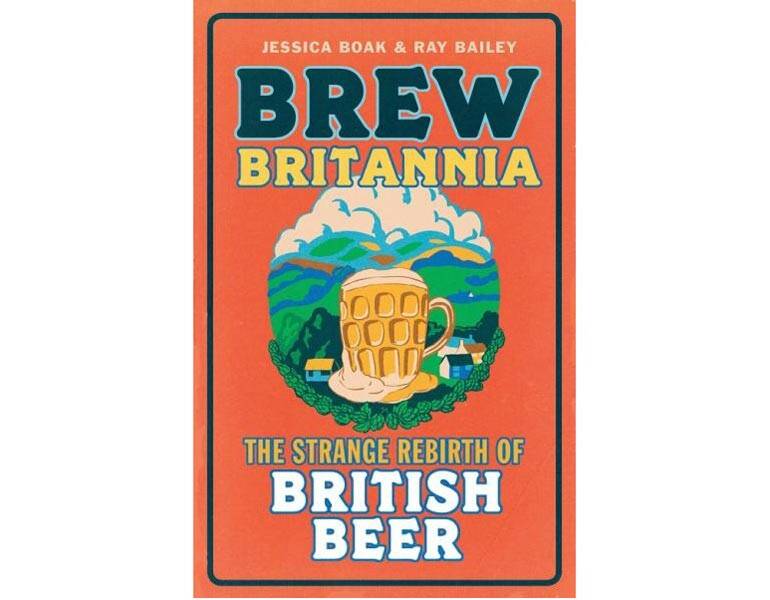Start 14-Day Trial Subscription
*No credit card required

Book Review: Brew Britannia
Check out this beer book review for your beer-related reading adventures! This time it's Brew Britannia:The Strange Rebirth of British Beer by Jessica Boak and Ray Bailey.
Brew Britannia:
The Strange Rebirth of British Beer
by Jessica Boak and Ray Bailey
Aurum Press, Softcover, $19.99, 298 pp.
Great Britain has a long and fruitful history of brewing great beers. British styles and brands are consumed all over the world, and many are completely unique and quintessentially British.
There was a dark time, though, when the British beer scene was in peril.
Prolific beer bloggers Jessica Boak and Ray Bailey outline the recent history and renaissance of British beer through the rise of groups and organizations such as the Society for the Preservation of Beers from the Wood (SPBW), the Campaign for Real Ale (CAMRA) and the Small Independent Brewers’ Association (SIBA).
Some of the organizations’ goals outlined in the book may seem antiquated and out-of-touch, but they all played roles in creating the vibrant craft beer scene that exists in Britain today.
A seemingly endless parade of colorful British characters are trotted out as examples of important people in British beer’s rebirth. Some started an interesting brewpub, others created a new brewery and some stood up to the monopolistic Big Six breweries that still hold much of the market share today.
Much of the first half of the tome is devoted to the rise of CAMRA. Still an important institution in the British beer scene, CAMRA strove to dismiss kegged beers as fizzy and tasteless compared to the cask-conditioned brews the organization considered far more flavorful and full-bodied. Also known as real ale, cask-conditioned beers had been slowly fading from the public’s view as the Big Six attempted to stamp out any individuality in local pubs and breweries.
CAMRA was, for the most part, successful. The Big Six loosened its hold on the industry, which allowed for more experimentation in brewing.
Still though, the public was wary of this pushy and sometimes snobby enterprise and many of the gains that CAMRA had won fell by the wayside over the years. People began to see CAMRA as a monolithic and outmoded agency, focusing more on the way beer was brewed than the rapid rise of exciting beers that were being produced specifically for keg-conditioning.
In the mid- to late 1990s, CAMRA membership was down and a new wave of British “craft” beer was rising, influenced in no small part by strikingly original American craft beers, specifically Sierra Nevada Brewing’s Pale Ale and Anchor Brewing’s Liberty Ale – the first American IPA. Many of the hugely hoppy aromas and flavors that are commonplace nowadays were revolutionary to Britons at the time. For years, these “catty” aromas and flavors had been denigrated.
One such example of America’s influence in Britain is Scotland’s BrewDog. The wildly popular (and often belligerent) brewery modeled its public profile on San Diego’s equally brash Stone Brewing Company; BrewDog even borrowed large chunks of Stone’s Arrogant Bastard label text when describing its own flagship, Punk IPA: “It is quite doubtful you have the taste or sophistication to appreciate the depth, character and quality of this premium craft-brewed beer.”
The spirit of Michael Jackson also looms large in this volume, as his works are referenced extensively and his rarefied view of the beer world was hugely influential to many upstart breweries and important personages throughout the recent history of British beer.
With comprehensive research (appendices, notes and an index take up the last 40 pages of the book) and an approachable prose style, Boak and Bailey, whose blog resides at boakandbailey.com, have crafted a memorable history of “the strange rebirth of British beer.” But after reading the story, it doesn’t sound so strange after all.
British tastes have changed, as has the general attitude toward great beer. Whether it’s a traditional English bitter or a double IPA brewed with figs and dates, Brew Britannia demonstrates why they both have an audience.



